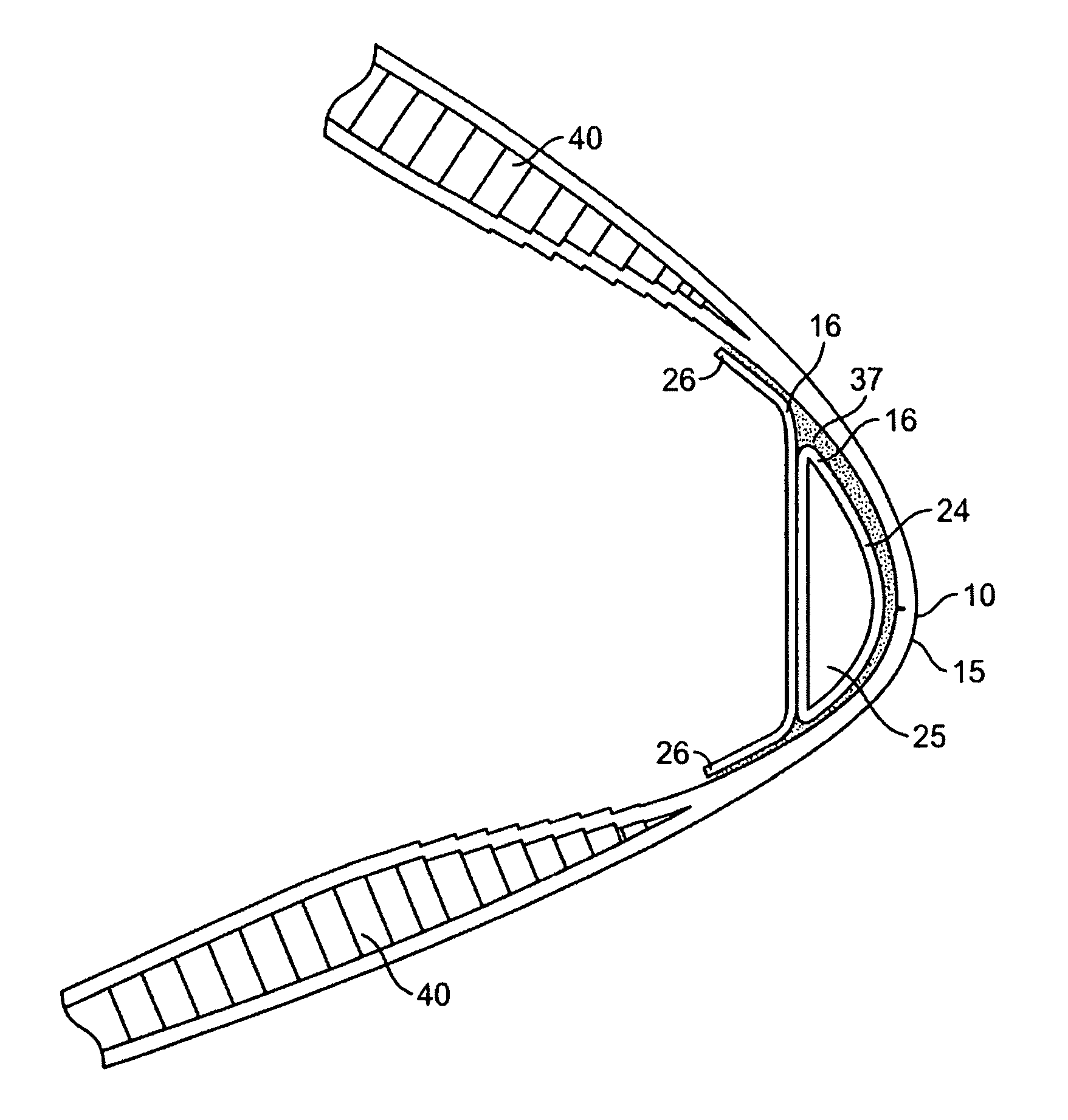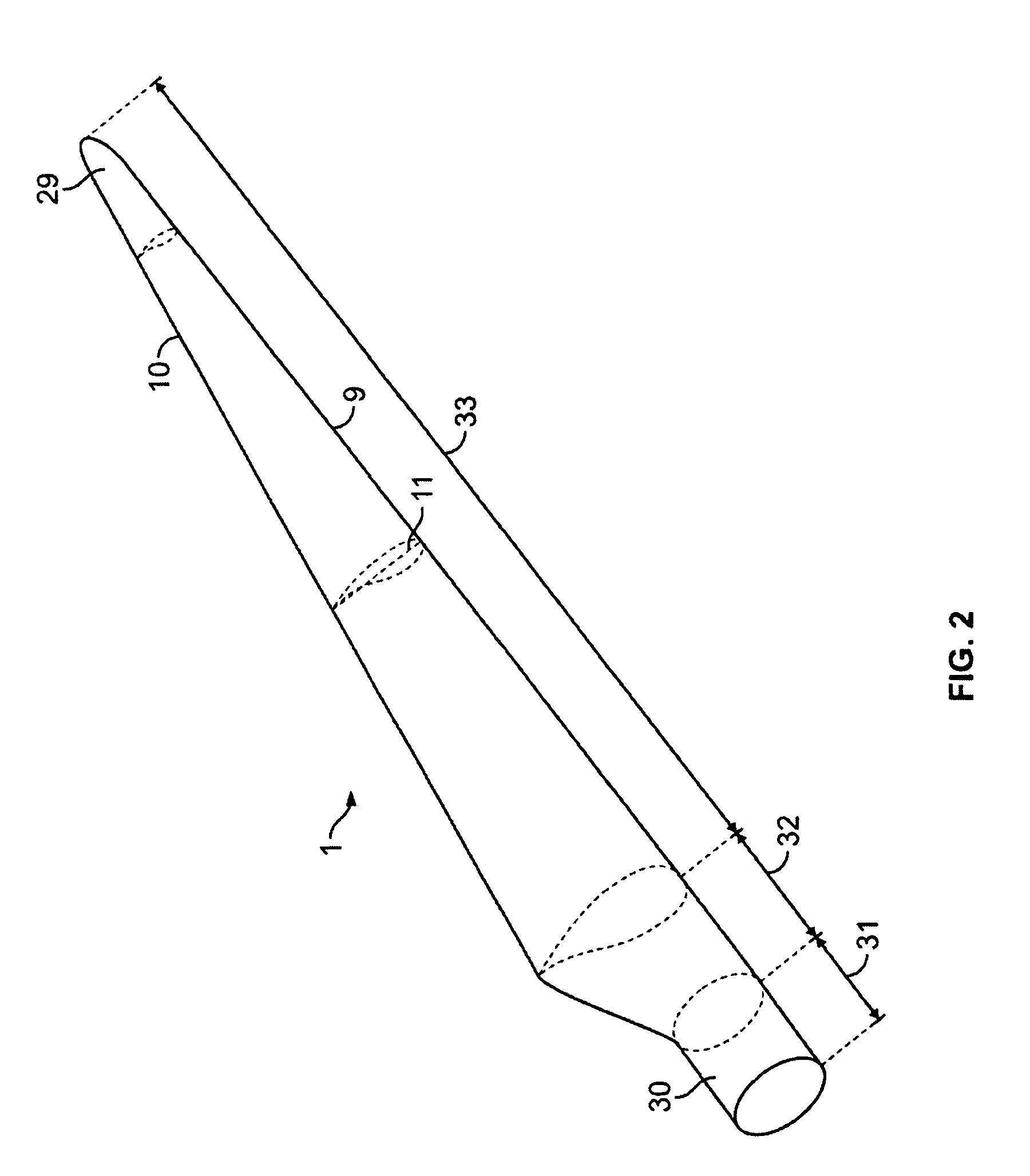Wind turbine blade for a rotor of a wind turbine
a technology of wind turbine blades and rotors, which is applied in the direction of propellers, water-acting propulsive elements, domestic objects, etc., can solve the problems of large load during blade operation, blade buckles, and increased risk of stress concentration, so as to reduce the amount of glue used
- Summary
- Abstract
- Description
- Claims
- Application Information
AI Technical Summary
Benefits of technology
Problems solved by technology
Method used
Image
Examples
Embodiment Construction
[0068]FIG. 1 illustrates a conventional, modern upwind wind turbine according to the so-called “Danish concept” with a tower 27, a nacelle 28 and a rotor 2 with a substantially horizontal rotor shaft 4. The rotor 2 includes a hub 5 and three blades 1 extending radially from the hub 5, each having a blade root 30 nearest the hub, and a blade tip 29 furthest from the hub 5.
[0069]FIG. 3 shows a schematic view of an airfoil profile 38 of a typical blade of a wind turbine depicted with the various parameters, which are typically used to define the geometrical shape of an airfoil. The airfoil profile 38 has a pressure side 6 and a suction side 7, which during use, i.e. during rotation of the rotor, normally face towards the windward side and the rearward side, respectively. The airfoil 38 has a chord 11 with a chord length 34 extending between a leading edge 9 and a trailing edge 10 of the blade. The airfoil 38 has a thickness 35, which is defined as a distance between the pressure side 6...
PUM
| Property | Measurement | Unit |
|---|---|---|
| Length | aaaaa | aaaaa |
| Length | aaaaa | aaaaa |
| Length | aaaaa | aaaaa |
Abstract
Description
Claims
Application Information
 Login to View More
Login to View More - R&D
- Intellectual Property
- Life Sciences
- Materials
- Tech Scout
- Unparalleled Data Quality
- Higher Quality Content
- 60% Fewer Hallucinations
Browse by: Latest US Patents, China's latest patents, Technical Efficacy Thesaurus, Application Domain, Technology Topic, Popular Technical Reports.
© 2025 PatSnap. All rights reserved.Legal|Privacy policy|Modern Slavery Act Transparency Statement|Sitemap|About US| Contact US: help@patsnap.com



